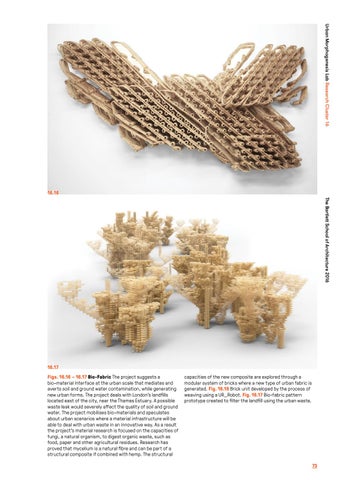Urban Morphogenesis Lab Research Cluster 16
16.16 The Bartlett School of Architecture 2016
16.17 Figs. 16.16 – 16.17 Bio-Fabric The project suggests a bio-material interface at the urban scale that mediates and averts soil and ground water contamination, while generating new urban forms. The project deals with London’s landfills located east of the city, near the Thames Estuary. A possible waste leak would severely affect the quality of soil and ground water. The project mobilises bio-materials and speculates about urban scenarios where a material infrastructure will be able to deal with urban waste in an innovative way. As a result the project’s material research is focused on the capacities of fungi, a natural organism, to digest organic waste, such as food, paper and other agricultural residues. Research has proved that mycelium is a natural fibre and can be part of a structural composite if combined with hemp. The structural
capacities of the new composite are explored through a modular system of bricks where a new type of urban fabric is generated. Fig. 16.16 Brick unit developed by the process of weaving using a UR_Robot. Fig. 16.17 Bio-fabric pattern prototype created to filter the landfill using the urban waste.
73
